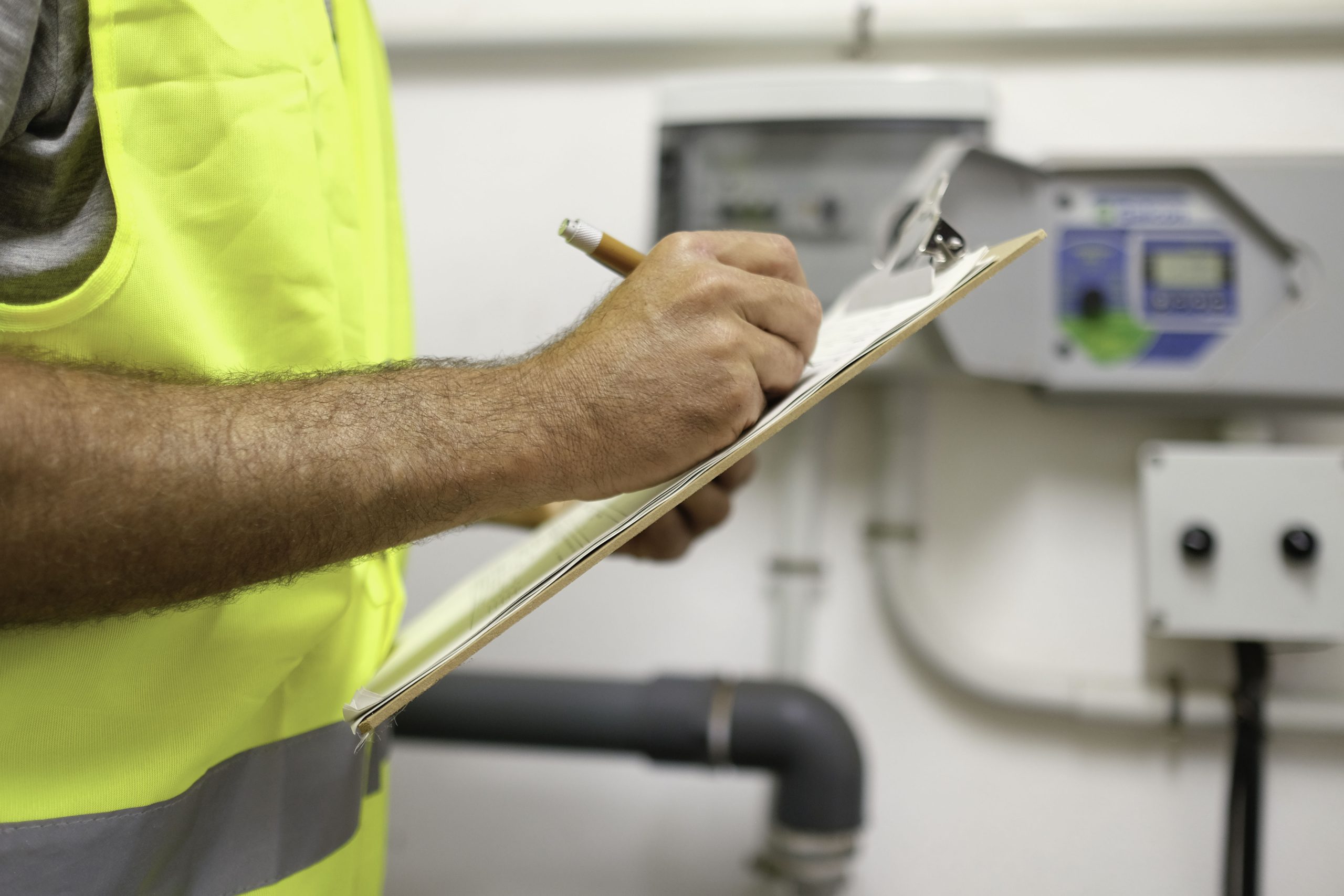Electrical maintenance doesn’t always make the top of the to-do list. But ignoring it won’t save time or money. It just invites outages, safety risks, and expensive repairs when you least expect them.
If you’re managing a building, overseeing a facility, or just trying to keep operations running without surprises, regular electrical system maintenance makes your life easier.
In this guide, you’ll get a full breakdown of what proper electrical system maintenance looks like.
What Is Electrical System Maintenance?
Electrical maintenance covers the inspections, testing, cleaning, and monitoring that keep your system reliable and safe. That includes checking electrical panels, testing protective devices, cleaning lighting systems, and keeping an eye on high-use electrical equipment.
It also means keeping an eye out for early signs of trouble:
- Frayed wires near outlets
- Burn marks or corrosion around terminals
- Loose connections behind breakers
- Discolored or overheating electrical components
These are the problems that often cause electrical failures and shut down entire sections of your facility without warning.
Routine electrical inspections help you spot risks early, stay compliant with safety regulations, and avoid last-minute repairs.
What Happens if You Skip Regular Electrical Maintenance?
Skipping regular maintenance activities often leads to:
- Higher maintenance costs
- More electrical services on short notice
- Fines for missed inspections
- Unplanned downtime during peak operations
You can fix that with consistent preventive maintenance tasks. Track your maintenance history, set clear maintenance schedules, and complete necessary repairs before issues escalate.
Core Electrical Maintenance Tasks for Facilities
Preventive maintenance only works when the right tasks are on your list. Start with the basics. These are the tasks that keep your system stable, safe, and out of the danger zone.
Visual Inspections
Look for anything that seems off. Don’t ignore discoloration on breakers, dusty panels, or missing labels.
Keep an eye out for:
- Heat marks or corrosion
- Worn wiring insulation
- Signs of moisture or buildup near outlets
These details usually point to serious electrical problems. Routine checks help you stay ahead of issues and avoid downtime.
Tighten and Replace Worn-Out Electrical Connections
Connections wear out over time. When they loosen, you end up with sparks, tripped breakers, and unpredictable shutdowns. You should regularly check breaker screws, wire terminals, and mounting brackets for outlets and switches.
If something looks brittle or charred, swap it out. Do it now, before you’re dealing with damaged equipment mid-shift.
Test and Calibrate to Keep Equipment Accurate
You can’t trust a system that hasn’t been tested. Regular checks keep your electrical devices working the way they should.
Test:
- Breakers and fuses for trip accuracy
- Fire alarms, exit lighting, and emergency shut-offs
- Backup systems that support critical equipment
Don’t assume everything works just because the power’s on. Protective devices often fail without warning.
Clean Out Dust and Gunk That Chokes the System
Dust and grime may not look dangerous, but they trap heat and cause electrical equipment to work harder. That kills efficiency and shortens lifespan.
You should keep your vents, cooling fans, and switchgear clean. Also, make sure there’s no gunk in motor housing and breaker panels, and clean around outlets, plugs, and high-use appliances.
Don’t forget overlooked spots like behind ceiling fans or around backup batteries. Clean equipment runs cooler and lasts longer.
Check Grounding and Bonding for Hidden Risks
Faulty grounding leads to surges, shocks, and fried electronic devices. This part doesn’t get a lot of attention, but it should.
During electrical preventive maintenance, measure grounding resistance and make sure all bonding points are intact. Check that exposed metal is grounded, and verify every piece of equipment has a clear path to discharge.
That’s what keeps a surge from wrecking your electrical systems.
Transformer Maintenance Essentials
Transformers do a lot of heavy lifting. If they go down, so does everything connected to them. You don’t want to wait until one starts humming or overheating before giving it attention
What to Check During Inspections
Look for anything that seems off. Vibration, buzzing, or heat coming off the unit? Those aren’t quirks. They’re warning signs.
Cracked seals, visible rust, or oil around the base usually point to bigger internal problems. Even discoloration around wiring points to stress that shouldn’t be ignored.
You don’t need to be an engineer to spot what’s off. Trust your instincts and use regular inspections to catch issues before they escalate.
Use Oil Testing to Catch Problems Early
If your transformer uses oil for insulation or cooling, that fluid can reveal a lot. Changes in color or consistency often indicate moisture, contamination, or early-stage arcing.
Oil testing takes minutes and gives you insight that would otherwise cost you a service call, or worse, a full replacement.
Improve Quality Monitoring and Surge Protection
You can tighten connections and clean equipment all day, but if your voltage is a mess, none of it matters. Poor power quality wears down components, fries circuits, and sends you straight back to emergency repairs.
Know What You’re Working With
Check the basics. Use power meters or analyzers to track fluctuations in voltage, current, and frequency. Look for irregular patterns, not just obvious spikes.
Inconsistent readings often point to power surges, bad grounding, or overloaded circuits. All of those quietly damage electronic devices and shorten the life of your system.
If your lights flicker when large equipment kicks on, or you hear buzzing near outlets, something’s off. That’s when it’s time to dig deeper.
Replace Old Surge Protectors
Surge protectors don’t work forever. After a few strong hits, they lose effectiveness, even if they still power on.
If yours are more than a couple of years old, test or replace them. Most fail silently, so you won’t know they’re useless until you’re replacing appliances or calling in electrical services for another round of damage control.
Add this to your regular inspections and replace them as needed. It’s a small cost compared to the damage unchecked surges can cause.
Emergency Systems and Electrical Safety Devices
When the lights cut out or something starts to smoke, you don’t want to realize too late that your emergency systems haven’t been touched in months. These backups need just as much attention as your main equipment.
Test What You Rely On
You depend on fire alarms, emergency lighting, and backup power systems to work without hesitation. That only happens if you test them.
Run drills. Trigger emergency shut-offs. Flip the breakers on your generators. Make sure everything still responds like it should. If it doesn’t, fix it immediately.
Inspect Safety Devices Before They Fail
Devices like ground fault circuit interrupters (GFCIs) and arc fault circuit interrupters (AFCIs) help reduce the risk of electrical shock and catch unsafe arcing before it turns into a serious hazard. But they’ll need a replacement.
These devices degrade with time and use. They need regular maintenance and testing, just like everything else.
If one hasn’t been tested in a while, assume it may not work properly. Replace any device that’s outdated, slow to respond, or showing signs of failure.
Keep Safety Labels Clear and Visible
Unreadable or missing labels can slow you down in a critical moment. Every breaker, shutoff, and high-voltage area should be clearly marked.
Smudged text and old stickers aren’t good enough. Label what needs it and replace what’s worn out, so no one has to guess during emergencies.
Preventive Maintenance Scheduling and Documentation
If your maintenance only happens after something breaks, you’re already behind. A simple schedule can keep you from scrambling during inspections.
Figure out what needs attention monthly, quarterly, or annually. High-use systems like panels, breakers, and lighting should get frequent checks. Less active components, like transformers or backup power, can be inspected less often but still need to be on the radar.
Write it down. Use digital tools or software solutions to log maintenance tasks, record maintenance history, and track necessary repairs over time. This helps you spot patterns and predict issues before they interrupt your operations.
Keep everything documented. Missed checks and vague records open you up to potential hazards, failed audits, and even code violations.
Tools and PPE for Safe Electrical Maintenance
You need the right tools if you want reliable results. Start with these tools for inspections and diagnostics:
- Multimeter: Checks voltage, continuity, and resistance
- Thermal imaging camera: Catches overheating electrical components
- Insulation resistance tester: Finds worn or compromised wiring
Add insulated screwdrivers, torque wrenches, and a label maker. These make your job cleaner and reduce the risk of electrical hazards or miscommunication.
Now, make sure your gear keeps you safe. Proper personal protective equipment (PPE) should always include:
- Flame-resistant clothing
- Rubber-insulated gloves
- Safety glasses with full side protection
- Dielectric boots for working near live circuits
Lockout and tagout procedures should be followed every single time. One missed step can lead to serious injury or costly equipment failure.
When you’re equipped properly and working with focus, you reduce risk and complete the job more efficiently. You also avoid repeat electrical repairs and keep the system steady.
Minimize Electrical Emergencies With Trillium’s Facility Maintenance Software

Tired of chasing down vendors or dealing with late-night system failures? You don’t need another full-time job managing electrical maintenance.
Trillium gives you an easy-to-use platform to manage everything in one place. Submit work orders with a few clicks, attach photos, set priorities, and track updates in real time.
This isn’t just a directory. Trillium connects you with over 6,000 licensed, experienced electricians who show up ready to get the job done right. They handle torque checks, inspections, repairs, and preventive service without the inflated costs or long wait times.
You also get full visibility into your maintenance schedule, cost tracking, and service history. That means fewer emergencies, better compliance, and more control over your building.
There’s no commitment, no hidden costs, and no long-term contracts. See how much easier your job gets when you run electrical maintenance through Trillium.
FAQs About Electrical System Maintenance
What is the maintenance of an electrical system?
It’s the ongoing process of inspecting, testing, cleaning, and repairing the components that keep your power reliable. Maintaining your electrical system helps reduce downtime, cut costs, and keep people safe.
What is basic electrical maintenance?
Basic maintenance includes checking for damage, tightening connections, cleaning panels, and testing breakers and safety devices. It’s how you catch faulty wiring, aging equipment, or early signs of short circuits before they cause issues.
What are the five common types of electrical maintenance?
The five common types of electrical maintenance include preventive, predictive, corrective, condition-based, and emergency maintenance. Preventive maintenance is the most effective for avoiding failure, while reactive maintenance often leads to bigger problems and higher costs.
What are the four types of system maintenance?
The four types of system maintenance are corrective, preventive, adaptive, and perfective. When it comes to electricity, your focus should be on preventive tasks that prevent problems and keep everything running smoothly.









